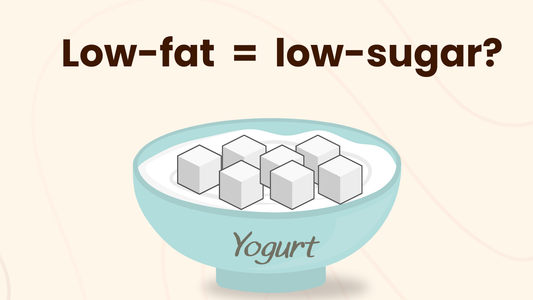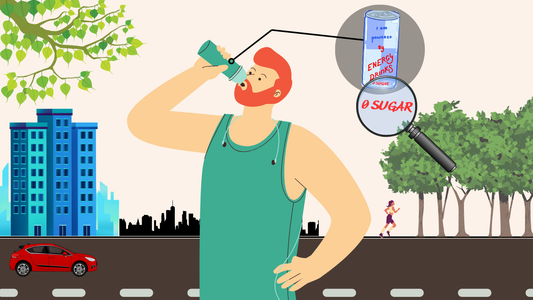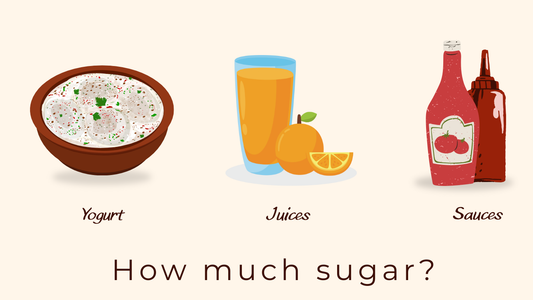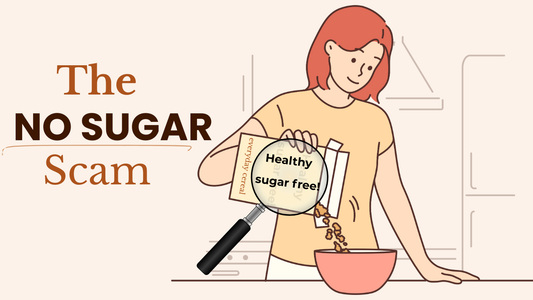Introduction: The Sweetness You Don’t See
If I told you that most people eat 3-4 times more sugar than they realize, you’d probably imagine desserts, soft drinks, or mithai. But here’s the shocking truth: the biggest source of sugar in your diet isn’t always the obvious sweets.
It’s the hidden sugars tucked inside foods you’d never suspect - biscuits labeled “digestive,” juices labeled “no added sugar,” sauces, breads, “healthy” protein bars, even your morning cornflakes.
👉 Spotting hidden sugars is not just a skill. In a country like India, drowning in diabetes, it’s survival.
Why Hidden Sugar Is the Real Enemy
The problem isn’t the teaspoon of sugar you add to chai. The problem is the 20–30 g of hidden sugar you unknowingly consume every time you eat a “healthy snack” or “refreshing juice.”
-
Sugar has 60+ names (glucose syrup, invert syrup, maltodextrin, fruit concentrate).
-
Packaged foods often list several types so it doesn’t look like sugar is the top ingredient.
-
Labels shout “no added sugar” while hiding syrups and concentrates.
👉 That’s how companies legally trick you into overdosing on sugar every single day.
Step 1: Learn the Many Names of Sugar
To spot hidden sugars, you need to know their disguises.
Common Aliases in India:
-
Simple sugars: sucrose, glucose, fructose, dextrose, maltose.
-
Syrups: glucose syrup, corn syrup, golden syrup, invert syrup, malt syrup, rice syrup.
-
“Healthy sugars”: jaggery, honey, coconut sugar, date syrup, fruit juice concentrate.
-
Powders: maltodextrin, lactose (milk sugar).
👉 If it ends with “-ose” or is called “syrup” or “concentrate,” it’s sugar.
Step 2: Flip the Pack
The front of the pack is marketing. The truth is always at the back.
-
Ingredients are listed in descending order. If sugar (or its alias) is in the first 3 ingredients, the product is sugar-heavy.
-
Don’t trust serving sizes. Always check sugar per 100 g/ml.
Quick Rule:
-
<5 g sugar/100 g = low sugar.
-
5–10 g = moderate.
-
10 g = high sugar.
Most Indian packaged foods fall in the 20–40 g range.
Step 3: The Sneakiest Everyday Foods
Here’s where hidden sugars live:
Breakfast Cereals
Marketed as “iron-rich” or “whole grain,” they often contain 25-30 g sugar per 100 g. That’s dessert for breakfast.
Flavored Yogurts
A small cup can carry 18–20 g sugar. That’s more than a gulab jamun.
Fruit Juices
“No added sugar” juices still use fruit concentrate. One glass = 25 g sugar (same as cola).
Sauces & Ketchups
Tomato ketchup? ~22 g sugar per 100 g. That’s why kids love it.
Biscuits (Even Digestive)
20–25% sugar, plus palm oil and maida. Nothing “digestive” about them.
Energy/Protein Bars
Advertised as “fitness fuel,” but often contain 15-20 g sugar per bar.
Step 4: The Indian “Healthy” Sugar Myths
Companies know Indians trust “desi” and “natural.” That’s why you see:
-
Jaggery biscuits marketed as healthier.
-
Honey drinks marketed as immunity-boosting.
-
Brown sugar sold as “less processed.”
👉 Reality: they’re all sugar. Jaggery and honey spike blood sugar just like refined sugar.
Step 5: Teach Your Eye to Catch Hidden Sugars
When reading labels, ask:
-
Does it taste sweet? If yes, it probably has sugar, even if the word “sugar” isn’t written.
-
Are there multiple sweeteners? If you see jaggery + glucose syrup + invert syrup → that’s sugar stacked under different names.
-
Is sugar in the first 3 ingredients? That’s a red flag.
-
Is it a “health” product? The more health claims, the more likely sugar is hiding.
Why Hidden Sugar Is More Dangerous Than Visible Sugar
-
You don’t count it → you underestimate your intake.
-
It’s everywhere → biscuits, drinks, sauces, even bread.
-
It makes you trust the wrong foods → you eat more of them.
Result? Constant insulin spikes → cravings → obesity → diabetes → fatty liver → heart disease.
👉 Hidden sugar is the silent engine of India’s health crisis.
What to Do Instead
-
Cook fresh when possible.
-
Choose plain curd over flavored yogurt.
-
Eat whole fruit instead of juice.
-
Pick snacks with <5 g sugar per 100 g.
-
Look for short, clean ingredient lists.
How EPRA Farms Solves This
At EPRA Farms, we’re committed to ending hidden sugar traps.
-
Our monk fruit sweetener contains only monk fruit + erythritol.
-
No jaggery disguised as health.
-
No fruit concentrates pretending to be natural.
-
No maltodextrin or artificial additives.
👉 When you sweeten with EPRA monk fruit, you know exactly what’s inside.
FAQs
Q: Is jaggery really better than sugar?
Not for diabetics. It spikes glucose even faster.
Q: Are fruit juices okay in moderation?
Not daily. They’re sugar water without fiber. Whole fruit is better.
Q: Is honey safe for kids or diabetics?
No. It’s ~80% sugar and raises blood sugar quickly.
Q: What’s the safest way to sweeten food?
Natural, clean-label options like monk fruit are best.
Conclusion: Spot It Before It Spots You
Hidden sugars are the deadliest because they don’t look dangerous. They wear halos like “digestive,” “immunity-boosting,” “no added sugar.”
👉 But once you learn to spot them, the trick is over.
Flip the pack. Learn the names. Question the labels. Because every gram of hidden sugar avoided is one step away from diabetes, obesity, and heart disease.





